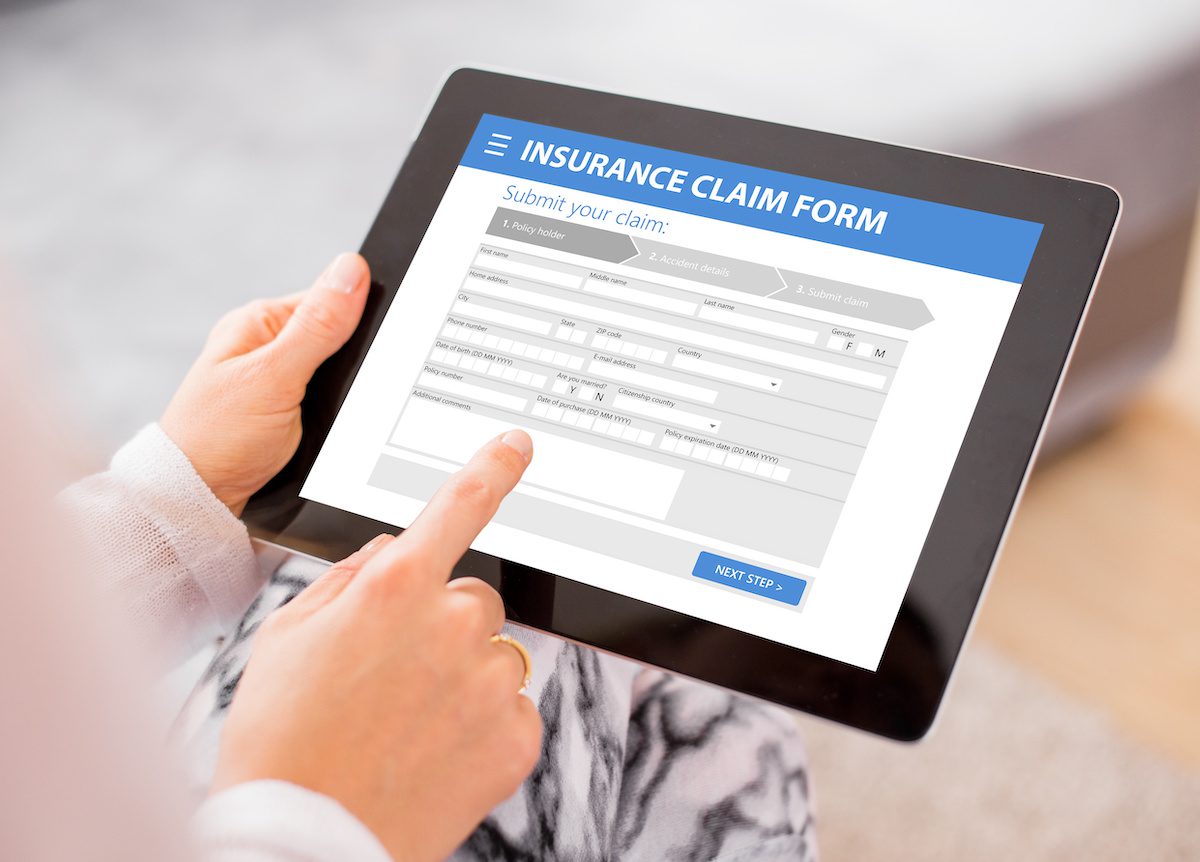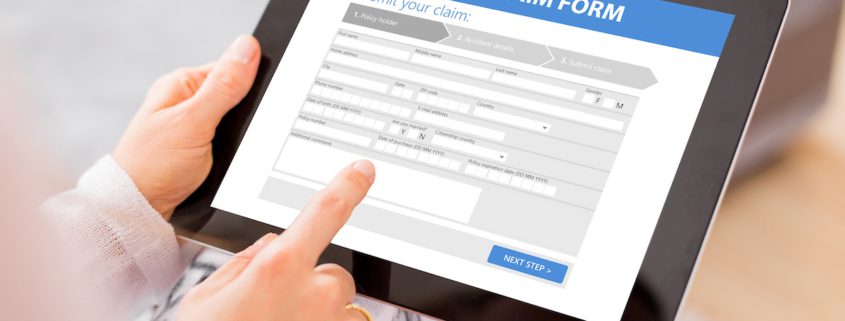How Does a Third-Party Insurance Claim Work?

A third-party insurance claim is basically when you file an insurance claim against someone else. It can be because of an accident or when someone else’s car causes damage to you or your property.
It’s important to understand the difference between a first-party and a third-party insurance claim since there are different responsibilities and processes required depending on the fault determination following a car accident.
Key Takeaways:
- Be prepared in case of an accident and carry all pertinent documents in your car, including your registration, insurance ID card, and the name and number of your insurance carrier and leasing agent (if applicable).
- Once everyone is safe, be diligent about getting the other driver’s information and contacting the police. It has to be determined who was at fault and you want to be sure you have all the information necessary for an accurate result.
- The third-party claim procedure allows you to choose who you want to repair your vehicle. The at-fault insurance company may have their favored collision repair shops, so it’s a good idea to get a quote or two on your own for comparison.
If there is a car accident and it’s determined that you are not at fault, then you become the third party and will need to file with their insurance carrier to have them pay for damages. Often, this will be handled by your insurance agent as a matter of resolving the accident. Let them take the lead since they know the business inside out and can be a good advocate.
What is a Third-Party Insurance Claim?
A third-party insurance claim is processed and filed with the other driver’s insurance company and should cover the following:
- Repairs to your car
- Any related medical expenses from the accident
- Transportation for you, your family, or loved ones while your car is being repaired
Since both insurance companies will usually be involved in determining fault, be sure you include your agent/carrier, as your personal representative, in all communications and interactions.
What to do Following a Car Accident
Nobody wants to get into an accident, but sometimes they happen. According to the Insurance Information Institute (III), it’s a good idea to be prepared ahead of time. These things will make it easier if you are ever faced with an emergency situation:
- Be sure to have all relevant information and critical documents in your car. This will include:
- Vehicle registration
- Proof of insurance
- Medical information (doctor’s names, allergies, medications)
- Leasing agent’s name
- Be emergency ready:
- Flares or emergency signs
- Small orange cones
- Blankets to provide warmth or comfort if needed
- First aid kit to render minor help if necessary
- Pad of paper and a pen
- Be ready to respond – you hopefully won’t be injured, but others might be and it’s always a good idea to have a cellphone available to call 911 and a basic knowledge of CPR if there is a life-threatening emergency.
- Don’t claim fault in the accident – that can be decided by the adjusters later.
Once you ensure everyone is safe, it is important to call the police and file an accident report. In some states, during weather-related incidents, such as major snowstorms, you can file a report after the fact. In these cases, it’s even more important to be diligent about collecting the right information or evidence.
When the police arrive, be sure to note the police officer’s name and badge number and find out the procedure for getting a copy of the accident report. Also, be sure to exchange information with the other driver(s). This will include:
- Name and contact information
- Vehicle information
- Insurance ID card information, including carrier and agent name and number
- Write your personal narrative down as quickly as possible before you forget any potentially important details – you will need to retell this story several times.
- Take pictures of the accident, the approach, and any pertinent hazards.
Remember the more information you obtain about the other driver’s insurance, the easier it will be for your carrier to resolve the issue with minimal direct participation from you.
If the other person tries to dissuade you from contacting insurance or the police, doesn’t have insurance themselves, or offers to pay an upfront amount to cover damages, decline their offer and continue with the above procedures.
First-Party vs. Third-Party Insurance Claims
Basically, the difference between a first-party and a third-party insurance claim is with a first-party claim you are making a claim against your own insurance. Whereas with a third-party claim, you are making a claim against someone else’s insurance.
When it is a first-party claim and is your personal insurance, then it is insurance you selected. You signed the contract or made the verbal agreement. You released your personal details and allowed them to access your credit history. You pay the bills.
First-party claims can be made for a variety of reasons, including:
- Collision where your car has damaged another car in an accident, and you are found at fault. If the other person files a claim against your insurance, then they are considered a third-party claimant.
- Comprehensive coverage means damage that occurs by other means, such as vandalism, theft, or a tree falling on your car.
- Liability coverage is when your car is damaged as the result of an accident.
- Uninsured or Underinsured motorist coverage.
- Healthcare bills for yourself or others paid under a medical coverage policy.
- Rental coverage – most policies today include a rental car to use while your car is being repaired.
- Towing services following an accident.
Third party claims can be against you if you are found at-fault following a car accident or on your behalf to a different insurance company if you were not at-fault. They are intended to cover claims for the injured party – so, basically, for every two+ car accident, there can be a first-party and a third-party claimant.
Although, it’s not unheard of to have a car accident where there is no fault at all. In those situations, then each person’s insurance covers their damages and/or medical expenses.
At Fault vs No Fault Third Party Claims
Determining fault can be a tricky thing since often everyone involved shares some responsibility when there is an accident. However, regardless of that, fault needs to be assigned to know who is going to pay the damages caused by the accident.
At Fault vs No Fault States
Most states assign fault when it comes to car accidents. That means the person who caused the accident has to pay for all damages. It also means that their bodily injury insurance (a component of the overall car insurance policy) pays for all medical expenses and their property damage liability insurance (also a component of their policy) pays for damage to the ‘third-party’ person’s car.
However, in a no-fault state (which there are only a few), drivers carry personal injury protection insurance or PIP insurance. PIP insurance covers each person’s medical expenses and lost wages following a car accident, no matter who might be at fault.
In a no-fault state, you would file a third-party claim for the property damage only and use your own personal PIP policy to cover any medical claims.
No-fault insurance was designed to get personal injury claims paid quickly and to reduce the number of small-dollar claims out of the court system. It has been moderately successful, but a number of state legislatures have still discontinued their PIP requirements and returned to be an at fault state.
What Information is Required to File a Third-Party Claim?
To file a third-party claim, you need to know the at-fault driver’s personal information, such as their name, phone number, insurance policy number, and any details about the accident. It also helps if you know the make and model of the car being driven as well as the license plate number.
Again, be sure to have the police report drawn up accurately and dispute any mistakes that may appear – it can cost you and your insurance company a lot of money if it’s determined that you were at fault or that there was no fault for the accident when, in fact, there was.
Third Party Insurance Claim Procedure
While insurance companies each have their own way of initiating and managing the claims process, you and your insurance agent will probably work with a claims representative or adjuster from the at-fault party’s insurance company.
The adjuster will review the police report and any witness statements, talk with you and their client about the details of the accident, and inspect the damage to your car (in person). Based on their summary report, they determine fault and will pay your claim in accordance with the at-fault person’s auto insurance policy.
There will be a check released to the third-party, you, or to a collision repair shop for reimbursement for the damage.
Can I Choose My Own Repair Shop?
According to the III, it is always a good idea to get at least one, if not more, estimates from your mechanic, dealership, or trusted garage. That way you have a trusted base to work with and can evaluate multiple quotes if needed.
The insurance company paying the claim may encourage you to work with a repair shop within their network. It is always in your best interest to get a quote from that shop to compare with your personally obtained quotes.
However, in the end, you are not required to use their preselected collision group. Every state allows you to choose who you ultimately have work on your car. Check here for guidelines by state.
Following an accident (as well as annually), you may want to check insurance quotes to see that you haven’t been unfairly impacted by an accident that wasn’t your fault.
Why Check Insurance Quotes Annually?
Financial advisors will often give the advice of doing an annual insurance review on all policies, including your car insurance. They often cite three excellent reasons:
- It could save you cash. The cost of insurance is expensive, and you want to be sure that you are getting the best price for your money. An annual review ensures that you are getting the best value for your dollar.
- You might catch changes that you have overlooked, such as a change in driving record or the number of miles you drive for your daily commute (e.g., a lot of people are working from home post-pandemic and are foregoing the daily commute). These are the types of things that could lower your insurance costs and improve your monthly budget.
- It’s easy — today, you can get online quotes for multiple insurance companies in minutes. No more time spent tracking down information or talking to several agents. You are able to get the best price or value for your money in record time.
How to Compare Quotes for Car Insurance
Comparing car insurance quotes from industry-leading national insurance companies is quick and easy. Using a car insurance quote generating tool, you can enter some simple information and compare quotes in seconds.
Just enter your basic information, including some personal details and information about your car and your past driving history, click ‘Submit,’ and your data is safely and securely evaluated giving you quotes from major insurers – names you will recognize.
From there, you can simply compare your quotes, talk with as many agents as you like, and decide on the best option for you.
The great part — there are no fees and no obligations. And while your credit report is checked, it’s what is considered a soft inquiry, so there won’t be any negative impact to your credit score.
Contact einsurance.com to get the latest car insurance quote today or call 866-845-3808.

 EINSURANCE
EINSURANCE EINSURANCE
EINSURANCE EINSURANCE
EINSURANCE